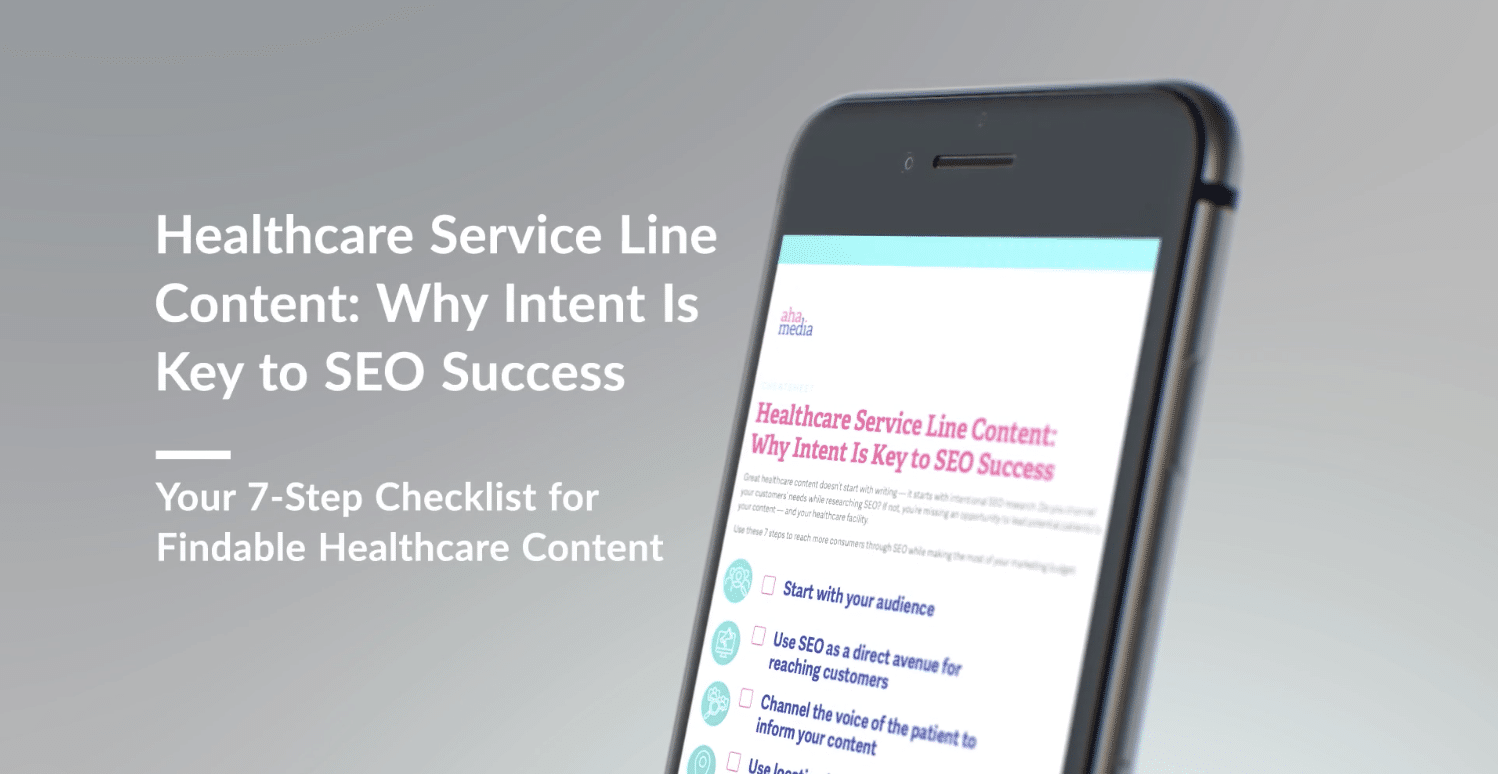
What’s Below:
- Why are Patient Stories Important in Healthcare Marketing?
- How to Find Patient Stories
- How to Write Patient Stories [A Patient Story Template]
- Patient Story Examples
When my son, Jack, was 14 months old, we learned he had a rare heart condition called a double aortic arch, or vascular ring. The condition is marked by an extra branch that stems from the heart, encircling the esophagus and trachea like a vise. The result: Kids sound like a truck motor when they breathe and have trouble swallowing.
We were terrified. Google searches yielded plenty of data, but almost nothing from patients who had been there, done that. Because of the lack of information available, I wrote about our experience for Good Housekeeping magazine.
A few weeks after the magazine hit newsstands, the marketing team at Rady Children’s Hospital in San Diego — where my son received care — called and asked me to share Jack’s story in an advertorial for San Diego Magazine.
Why Are Patient Stories Important in Healthcare Marketing?
Patient testimonials are powerful marketing tools. When you’re facing a new diagnosis, you want to know about the patient experience. Hearing from someone who experienced the same condition — and came out OK on the other side — is not only comforting, but it may lead you to seek out the same healthcare team.
You can’t overstate the value of patient testimonials. Among the perks for healthcare marketers:
Patient stories are covert healthcare marketing
Patient stories pack an emotional punch. Sharing an impactful story makes readers feel something. These patient stories bring your facility — and team — to life.
From my story, readers learned our doctor was a “toddler whisperer” who uncovered a condition several other physicians missed. For a person seeking excellent, compassionate healthcare from real people — not just from a faceless facility — these details create an emotional response that may lead to action. Patient stories are often a vehicle that spurs readers to call.
Stories may even affect patient outcomes
Reading patient stories can help people feel better. Research published in the Annals of Internal Medicine compared 2 groups of patients with high blood pressure. The study found that patients who watched videos featuring stories similar to their own could better control their blood pressure than those who watched a generic health improvement video.
How to Find Patient Stories for Healthcare Marketing
Masterminding ways to spot and capture those patient stories can feel overwhelming. Never fear. These 4 key strategies can streamline the process:
- Talk to staff: Ask them to recall their most complex case, memorable patient or emotional patient interaction. Compelling patient stories come from physicians, nurses and other providers who care for patients.
- Monitor social media: Ask your hospital’s social media team if any stories or positive shout-outs have been posted to Facebook, Twitter, Instagram or TikTok. A small post on a social channel can alert you to an inspiring patient story. And set up Google Alerts for your hospital’s name, like Rady Children’s Hospital did to learn about mine.
- Select the right sources: Consider where you’ll use the story. Are you trying to increase volume in a particular service line? Attract new donors? Or secure more diverse patients (or staff)? Use these questions to guide your search. And once you find a source, don’t overuse them. One ask is great. Three or four? Not so much.
- Find the story first, format second: Too often, healthcare marketers find a customer story and think, “Patient story video!” or “Article!” First, spend the time to truly understand the story, and then decide the content format. You can use the story in many ways if you free your mind from one content type and instead focus on the natural beauty of the patient narrative.
How to Write Patient Stories for Healthcare Marketing
A patient story template
An absorbing testimonial from grateful patients creates an immersive experience for readers. That powerful first-person account can help potential patients feel confident when putting their lives — or their loved ones — in the hands of your team. But how do you write a patient story that balances the narrative with the need to promote the hospital? Follow these steps:
Start with stakeholder interviews of patients
To write a moving patient story, interview both the patient and the provider who treated them. A writer may need to interview a patient’s family member or multiple people on the care team to truly understand the impact of the patient’s condition and treatment plan. For my story, the Rady team interviewed my husband and me and the hospital’s chief of pediatric otolaryngology (ear, nose and throat).
During these interviews, be as empathetic as possible to the patient and family. Before diving into your questions, thank the person for sharing their story. Tell them you understand it may be difficult to share or relive the experience. Express that you’re honored to hear their story and share it to help others. And let them read the story before you publish it.
Rady’s staff took special care to ensure I was comfortable with the content and images they selected. They involved me in all aspects of the process, from scheduling the photo shoot to fact-checking every detail. And they allowed me to proof the piece before publication.
Topics to discuss:
- What life was like before and after diagnosis
- How the condition affected their daily life and their family’s life
- What the treatment process was like
- Fears or worries they had, and how the hospital or healthcare team eased them
- Any standout moments during treatment or connections with the healthcare team
- What life is like now and how it’s improved
Talk to the care team
Talk to a provider or the care team to understand their perspective. Find out:
- How complex the case was
- What advanced tools or skills they used during treatment or surgery
- How the care team worked together to achieve a successful outcome
Focus on the story
Before writing a patient story, reflect on how you would tell this tale to a friend. What are the amazing details? How did the patient triumph over adversity? Did the doctor or care team go above and beyond? Think of the patient story from a human perspective, not just as a content marketer touting your healthcare organization. When you access the human side of the patient narrative, people are more likely to connect with it.
Start with the drama
Like any good story or novel, begin with the action: when a patient recognized something wasn’t right, on the day of diagnosis or before having life-saving surgery. Our patient story starts with my husband and me reflecting on Jack’s first few months. We always knew something wasn’t quite right because his breathing sounded like a diesel engine. Then, the writer dove into the drama by describing Jack choking on a pretzel days before his first birthday and how I attempted to administer CPR.
Get into the details
Pay attention to what’s going on in the periphery of a patient’s clinical care to produce more compelling patient storytelling. Highlight the struggle, use evocative quotes and describe scenes vividly. In our patient story, the writer wrote about how the doctor blew bubbles to put Jack at ease before surgery. It was a small detail, but it helped set the scene and show how Rady Children’s catered to kids.
Put the stories in the right place
Sometimes patient testimonials are completely disconnected from related content on the website. Make sure your patient stories and testimonials are as close as possible to your descriptions of your healthcare services. For instance, Jack’s patient story would make sense to include on ENT, pulmonology or cardiovascular health service pages. But linking to his story from an orthopedic service page would be confusing.
Patient stories are our chance to pull back the curtain from our healthcare organization — to reveal our personality — and show why customers should choose us. By being braver in our storytelling, we can make the connection that causes our customers to convert. My son received top-notch care at Rady Children’s Hospital. Sharing Jack’s story and assisting with the hospital’s marketing efforts was an honor and a pleasure. That’s the passion you want potential patients to feel when they read your content.
See Excellent Patient Story Examples or Hire Us!
Read our blog post, 5 Standout Examples of Writing Patient Stories to Connect With Audiences, to see patient videos and stories that resonate. Plus, more tips for creating them.
At Aha Media, we offer patient story packages to fit your needs and budget. Take the guesswork out of creating effective patient stories, and let us do it for you. Reach out to us for details.
Want More on Hospital Marketing?
![]()

Last updated March 2022






